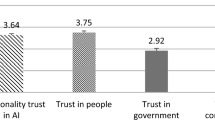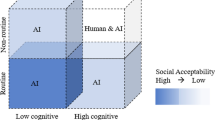Abstract
This paper presents a methodology with which evaluation of control rooms in safety–critical industry has been carried out. The results of two cases of evaluation in nuclear power plants (NPP) are presented to elaborate the method thoroughly. The evaluation methodology draws from conventions of human factors and usability evaluation methods but adds an activity theoretical viewpoint by considering different control room functions in a purposeful activity system. A control room has three functions in an activity: instrument, psychological tool, and a communicative tool. The introduced evaluation approach allows understanding of quality of the control room on the level of outcomes it produces, work practices that it consolidates, and the user experience it creates. The evaluation approach is demonstrated by presenting baseline evaluations of two hybrid NPP control rooms that were carried out before major upgrade projects were implemented. Hybrid control room refers to a state in which modern and original hardwired technological solutions are in use simultaneously.










Similar content being viewed by others
Notes
Probably the most commonly used term is human computer interaction (HCI) but by replacing the “computer” with a more general “technology” the scope of the research field widens slightly and also technologies not involving computers can be addressed.
Developing the methodology to describe situations in a way that makes explicit the connections of the events in the situation to higher level safety and efficiency functions, has been on our research agenda for many years. An overview of the earlier joint work in this issue is provided by Norros (2004). The use of FSM is explained also by Salo et al. (2009).
References
Bannon L (1991) From human factors to human actors. In: Greebaum J, Kyng M (eds) Design at work: cooperative design of computer systems. LEA, Mahwah, pp 27–44
Béguin P, Rabardel P (2000) Designing for instrument-mediated activity. Scand J Information Systems 12:173–190
Bødker S (2006) When second wave HCI meets third wave challenges. NordiCHI. doi:10.1145/1182475.1182476
Braarud P-O, Skraaning Jr G (2006) Insights from a benchmark integrated validation of a modernized NPP control room: performance measurement and the comparison to benchmark system. American Nuclear Society, NPIC&HMIT, Albuquerque
Burkhardt J, Détienne F, Hébert A, Perron L, Safin S, Leclercq P (2009) An approach to assess the quality of collaboration in technology-mediated design situations. ECCE 2009, Helsinki, pp 30:1–30:9. Retrieved from http://portal.acm.org/citation.cfm?id=1690508.1690551
Carroll JM (1997) Human–computer interaction: psychology as a science of design. Int J Human-Computer Studies 46(4):501–522. doi:10.1006/ijhc.1996.0101
Dahl Y, Alsos OA, Svanæs D (2010) Fidelity considerations for simulation-based usability assessments of mobile ICT for hospitals. Int J Human-Computer Interaction 26(5):445–476. doi:10.1080/10447311003719938
Daniellou F (2005) The french-speaking ergonomists’ approach to work activity: Cross-influences of field intervention and conceptual models. Theoretical Issues in Ergonomics Science 6(5):409–427. doi:10.1080/14639220500078252
Dekker S (2011) Drift into failure—from hunting broken components to understanding complex systems. Ashgate, Burlington
Dewey J (1999) The quest for certainty. A study of the relation of knowledge and action (finnish translation). Gaudeamus, Helsinki
Dourish P (2001) Where the action is—the foundations of embodied interaction. MIT Press, Cambridge
Engeström Y (1987) Learning by expanding: an activity-theoretical approach to developmental research. Orienta-Konsultit, Helsinki
Gay G, Hembrooke H (2004) Activity-centered design: an ecological approach to designing smart tools and usable systems. MIT Press, Cambridge
Harrison S, Sengers P, Tatar D (in press) Making epistemological trouble: third-paradigm HCI as successor science. Interact Comput. doi:10.1016/j.intcom.2011.03.005
Hart SG, Staveland LE (1988) Development of a multi-dimensional workload rating scale: results of empirical and theoretical research. In: Hancock PA, Meshkati N (eds) Human mental workload. Elsevier, Amsterdam, pp 139–183
Huang E, Mynatt E, Trimble J (2006) Displays in the wild: understanding the dynamics and evolution of a display ecology. In: Fishkin K, Schiele B, Nixon P, Quigley A (eds) Pervasive computing. Springer, Berlin, pp 321–336
Hyysalo S (2002) Transforming the object in product design. Outlines, Critical Social Studies 4(1):59–83
Kaptelinin V, Nardi B (2006) Acting with technology: activity theory and interaction design. MIT Press, Cambridge
Kestenbaum V (1977) The phenomenological sense of John Dewey: habit and meaning. Humanities Press, Atlantic Highlands
Klemola U-M, Norros L (2001) Practice-based criteria for assessing anaesthetists’ habits of action: outline for a reflexive turn in practice. Med Educ 35(5):455–464. doi:10.1046/j.1365-2923.2001.00894.x
Klemola U-M, Norros L (2002). Activity-based analysis of information characteristics of monitors and their use in anaesthetic practice. ECCE 2002, Catania
Koski-Jännes A (1999) From addiction to self governance. In: Engeström Y, Miettinen R, Punamäki R-L (eds) Perspectives on activity theory. Cambridge University Press, Cambridge
Kuutti K (1991) The concept of activity as a basic unit of analysis for CSCW research. ECSCW 1991, Amsterdam, pp 249–264
Laarni J, Norros L, Rinttilä E (2006) Control room modernisation from an evolutionary point of view—experiences gained at the loviisa NPP. Workshop on Future Control Station Designs and Human Performance Issues in Nuclear Power Plants, Halden
Leontjev AN (1978) Activity, consciousness, and personality (finnish translation) Kansankulttuuri Oy, Helsinki
Lepreux S, Abed M, Kolski C (2003) A human-centred methodology applied to decision support system design and evaluation in a railway network context. Cogn Technol Work 5(4):248–271. doi:10.1007/s10111-003-0128-9
Lützhöft M (2004) “The technology is great when it works”: maritime technology and human integration on the ship’s bridge. Dissertation, Linköping University
Määttänen P (2009) Toiminta ja kokemus (action and experince). Gaudeamus, Helsinki
Mattsson S (2011) Measures of collaboration in CSCW: usability and collective measures in remote and co-located problem-solving. Master’s thesis, Chalmers University of Technology
McCarthy J, Wright P (2004) Technology as experience. MIT Press, Cambridge
Merleau-Ponty M (1986) The phenomenology of perception. Routledge & Kegan Paul, London
Nachreiner F, Nickel P, Meyer I (2006) Human factors in process control systems: the design of human–machine interfaces. Saf Sci 44(1):5–26
Neale DC, Carroll JM, Rosson MB (2004) Evaluating computer-supported cooperative work: Models and frameworks. In: Proceedings of CSCW 2004. Chicago, IL, pp 112–121. doi:10.1145/1031607.1031626
Nickel P, Nachreiner F (2008) Evaluation of presentation of information for process control operations. Cogn Technol Work 10(1):23–30. doi:10.1007/s10111-007-0074-z
Norman DA (2006) Logic versus usage: the case for activity-centered design. Interactions 13(6):45-ff. doi:10.1145/1167948.1167978
Norros L (2004) Acting under uncertainty. The core-task analysis in ecological study of work. VTT, Espoo
Norros L, Klemola U (1999) Methodological considerations in analysing anaesthetists’ habits of action in clinical situations. Ergonomics 42(11):1521–1530
Norros L, Nuutinen M (2005) Performance-based usability evaluation of a safety information and alarm system. Int J Hum-Comput Stud 63(3):328–361. doi:10.1016/j.ijhcs.2005.03.004
Norros L, Salo L (2009) Design of joint systems: a theoretical challenge for cognitive systems engineering. Cogn Technol Work 11(1):43–56
Norros L, Savioja P (2007) Towards a theory and method for usability evaluation of complex human-technology systems. Activités 4(2):143–150
Norros L, Liinasuo M, Hutton R (2011a) Evaluating the potential of new technological tools for safety critical work. Interact Comput 23(4):299–307. doi:10.1016/j.intcom.2011.05.003
Norros L, Liinasuo M, Savioja P (2011b) Operators’ conceptions of procedure guidance in NPP process control. In: Proceedings of EHPG. Halden, Norway
O’Hara J (1999) A quasi-experimental model of complex human-machine system validation. Cogn Technol Work 1(1):37
O’Hara J, Pirus D, Beltratcchi L (2003) Information display: considerations for designing modern computer-based display systems (no. EPRI-1002830). EPRI, Palo Alto
Park J (2009) The complexity of proceduralized tasks. Springer, London
Peirce CS (1991) Peirce on signs. In: Hooper J (ed) Writings on semiotic by Charles Sanders Peirce. University of North Carolina Press, Chapel Hill
Peirce CS (1998a) The Harvard lectures on pragmatism. In: T.P.E. Project (ed) The essential Peirce. Selected philosophical writings. Indiana University Press, Bloomington, pp 133–241
Peirce CS (1998b) The Peirce edition project. Introduction. In: T.P.E. Project (ed) The essential Peirce. Selected philosophical writings. Indiana University Press, Bloomington, pp 133–241 (pp XXX)
Raeithel A (1983) Tätigkeit, arbeit und praxis. Campus, Frankfurt am Mein
Randell R, Wilson S, Fitzpatrick G (2010) Editorial—evaluating new interactions in health care: challenges and approaches. International Journal of Human-Computer Interaction 26(5):407–413. doi:10.1080/10447311003719847
Roto V, Law E, Vermereen A, Hoonhout J (2011) User experience white paper - bringing clarity to the concept of user experience. http://www.allaboutux.org/files/UX-WhitePaper.pdf. Accessed 1 December 2011
Rückriem G (2003) Tool or medium? The meaning of information and telecommunication technology to human practice. A quest for systemic understanding of activity theory. Paper Presented in FISCAR ‘03. Espoo
Rückriem G (2009) Digital technology and mediation: a challenge to activity theory. In: Sannino A, Daniels H, Gutiérrez KD (eds) Learning and expanding with activity theory. Cambridge University Press, New York, pp 88–111
Salo L, Norros L, Savioja P (2009) Using operating procedures in NPP process control. In: Proceedings of ECCE 2009, pp 258–266
Savioja P, Norros L (2008) Systems usability—promoting core-task oriented work practices. In: Law E, Hvannberg E, Cockton G (ed) Maturing usability. Quality in software, interaction and value. Springer, London, p 123
Savioja P, Norros L, Salo L (2008) Evaluation of systems usability. Proceedings of ECCE 2008, pp 110–117
Schraagen J, Militello L, Ormerod T, Lipshitz R (2008) Naturalistic decision making and macrocognition. Ashgate, Burlington
Stanton N, Salmon P, Jenkins D, Walker G (2010) Human factors in the design and evaluation of central control room operations. CRC Press, Boca Raton
Stevenson D, Hutchins M, Smith J (2010) Human-centered evaluation for broadband tertiary outpatient telehealth: a case study. Int J Hum Comput Interact 26(5):506–536. doi:10.1080/10447311003719979
Twidale M, Randall D, Bentley R (1994) Situated evaluation for cooperative systems. In: Proceedings of CSCW 1994. Chapel Hill, North Carolina, pp 441–452. doi:10.1145/192844.193066
Upton C, Doherty G, Gleeson F, Sheridan C (2010) Designing decision support in an evolving sociotechnical enterprise. Cogn Technol Work 12(1):13–30. doi:10.1007/s10111-008-0124-1
Vicente KJ (1999) Cognitive work analysis. Toward a safe, productive, and healthy computer-based work. Lawrence Erlbaum Publishers, Mahwah
Vygotsky LS (1978) Mind in society. The development of higher psychological processes. Harvard University Press, Cambridge
Ylirisku S, Halttunen V, Nuojua J, Juustila A (2009) Framing design in the third paradigm. In: Proceedings of the 27th international conference on human factors in computing systems, Boston, MA, USA, pp 1131–1140. doi:10.1145/1518701.1518874
Acknowledgments
The authors have been fortunate to work with an excellent research team. We wish to thank project manager Jari Laarni and the whole team: Leena Salo, Marja Liinasuo, Iina Aaltonen, Hannu Karvonen and Hanna Koskinen for inspiring collaboration in conducting the work. The work presented here has been funded by the Finnish National Nuclear Safety Program SAFIR, and the Fortum Foundation. We thank the funding organizations for the possibility to conduct the studies. The authors thank the collaborating NPPs and their personnel especially the trainers and the operators for their contributions in the evaluation studies.
Author information
Authors and Affiliations
Corresponding author
Rights and permissions
About this article
Cite this article
Savioja, P., Norros, L. Systems usability framework for evaluating tools in safety–critical work. Cogn Tech Work 15, 255–275 (2013). https://doi.org/10.1007/s10111-012-0224-9
Received:
Accepted:
Published:
Issue Date:
DOI: https://doi.org/10.1007/s10111-012-0224-9




